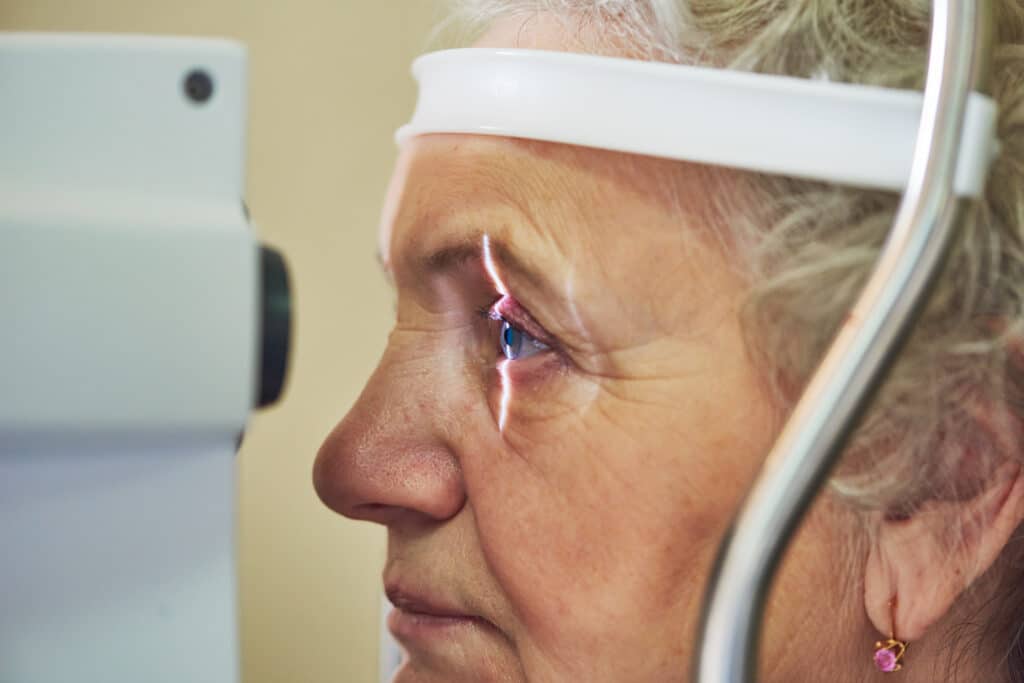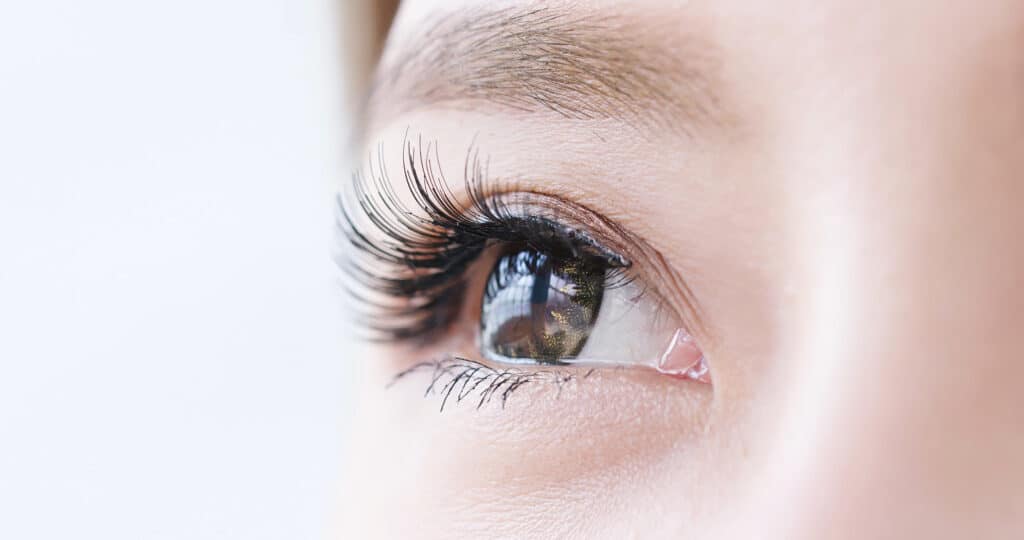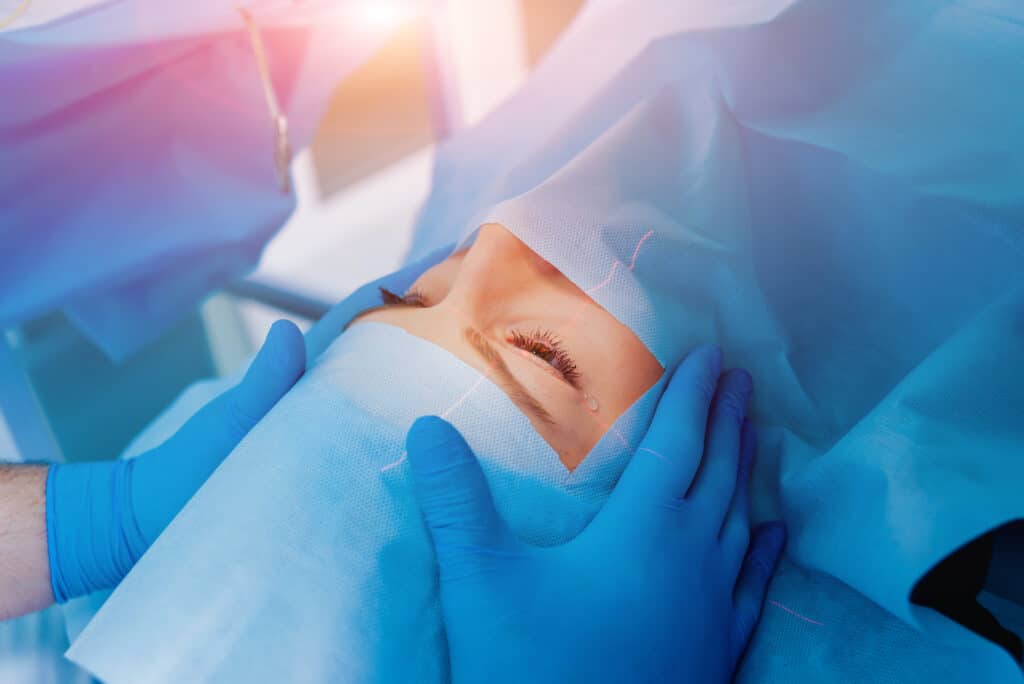SMILE: The Newest Innovation in Laser Vision Correction Technology
January 14, 2020
We all cherish our memories, and having clear vision is an important part of having clear, long-lasting memories. Clear vision allows us to make the most of our experiences and enjoy every moment of life.
What if a 30-second procedure could give you the better vision you have desired for a long time?
Today, we want to tell you about the newest laser vision correction technology coming to our practice – SMILE! Together with LASIK, SMILE provides us with a complete set of laser vision correction tools to help many patients find better vision and have less dependence on glasses or contacts. We now offer the most complete set of laser vision technology available in the United States.
Practices that are serious about providing the right custom treatment for each patient offer the full range of refractive surgery options, including LASIK, PRK, Refractive Lens Exchange, and SMILE.
In order to be able to create the best custom treatment for your individual needs, Heart of Texas Eye Institute offers all of the above, meaning you can be sure you will receive the ideal treatment option to achieve the clearest possible vision.
In this article, we aim to provide a comprehensive overview of the SMILE procedure and address some questions that you may have about the process.

LASIK and SMILE: A Brighter Future With New Laser Vision Correction Options
Whether LASIK or SMILE is the laser vision correction best suited for you, your vision for the future can be sharpened. Understanding how both LASIK and SMILE work will help you be more informed of your vision procedure options.
Overview of LASIK
As you know, LASIK has been helping patients for more than 25 years to see more clearly without glasses.
LASIK was developed in the early 1990s and is the most utilized form of laser vision correction today. During the LASIK procedure, a laser is used to make a small flap across the cornea. The flap is folded back, and a second laser is used to reshape the cornea, which allows the eye to focus clearly. The flap is then folded back into its original position.
After LASIK, it takes very little time for the flap to heal, and side effects include slight risk of infection and temporary dry eye symptoms. Visual recovery takes place immediately. Healing and stability of the flap takes four to seven days.
Check out our LASIK education page to learn more about all the ways LASIK can help you see more clearly.
Overview of SMILE
SMILE is the first major innovation in laser vision correction since LASIK. The procedure is minimally invasive, noiseless, and odorless.
During a SMILE procedure, a thin, contact lens-shaped layer just beneath the surface of the eye is removed through a small opening. Due to removing this layer, the cornea is gently reshaped and the patient’s vision is sharpened, correcting the refractive error.
SMILE is a gentle and highly precise procedure lasting only a few minutes total, with the laser only active for about 30 seconds. There is little disturbance to the eye because of the small laser opening size.
Cases of dry eye, severed nerves, and infection as a result of laser vision correction are very low with SMILE. Overall, it tends to be a very comfortable and convenient experience for patients. Patients are able to resume most normal daily activities within a few days, including driving, showering, applying makeup, and going to work.
The visual outcome is highly predictable. More than 750,000 SMILE procedures have been performed worldwide, and the results on visual outcome have been consistent and highly predictable.
The SMILE Procedure – Step by Step
To help you understand SMILE, review these four simple steps that a patient undergoes during the procedure. Part of what makes this procedure special is its simplicity:
- SMILE Step 1 – Your eye is measured and tested to ensure total precision and accuracy.
- SMILE Step 2 – A precise laser is used to trim a small contact-lens shaped layer just under the surface of the cornea.
- SMILE Step 3 – A tiny laser opening is made on the surface of the eye near the edge of the cornea.
- SMILE Step 4 – The small layer, which is about the size of a contact lens, is removed through the tiny opening.
That’s it! This simple procedure reshapes the cornea of your eye to allow it to focus images more clearly on your retina, creating better vision without glasses or contacts.
LASIK and SMILE have similarly positive visual outcomes, and both have been proven around the world to create better, freer vision.
Questions About SMILE?
Although you now know what SMILE is, here are six of the most common questions we hear from patients. Good education leads to good decisions.
- Which one is better, SMILE or LASIK?
This is one of the most common questions we hear, and many patients want to know which procedure is “better.” The fact is that both LASIK and SMILE are proven, consistent procedures, and most patients will be very happy with either procedure. Generally speaking, SMILE is the more gentle laser vision correction option and has a smaller risk of transient dry eye syndrome. There is no flap created in SMILE, therefore the risk of dislodging the flap is avoided. The surface of the cornea is left intact with SMILE, allowing the eye to maintain its physiologic and biomechanical natural state. Based on your eye structure and lifestyle goals, your surgeon can recommend the right procedure for you! - Why haven’t I heard of SMILE before?
While SMILE is a new, FDA-approved procedure in the United States, it has been performed worldwide for many years. In fact, more than 1,000 doctors around the world have performed the procedure, and more than 1,000,000 eyes have benefited from better vision thanks to SMILE. - Does SMILE cost more than LASIK?
While SMILE and LASIK use different laser technologies to recreate the clarity of your vision, the costs of the two procedures are often very similar. These costs account for the skill and experience of your surgeon, the costs and fees of acquiring and using the laser technologies, and the costs of the support staff and surgical follow-up. We outline a more comprehensive assessment of cost later on in this article. - Will SMILE hurt?
Patients consistently tell us it was comfortable. Some patients do say they feel a tiny amount of pressure around their eye for a few seconds during the procedure, but are quick to clarify that it didn’t hurt at all! - Why don’t more practices offer SMILE?
We don’t know! Along with LASIK and PRK, SMILE is a necessary and valuable part of a complete laser vision correction program. SMILE isn’t the right procedure for everybody, but we believe that your doctor should have access to every possible technology to ensure they can offer you the best procedure. If a doctor isn’t able to offer LASIK, PRK and SMILE, can you be sure you are getting the best procedure for your eye and lifestyle? - Is SMILE safe?
Yes. SMILE is a proven and consistent laser vision correction procedure that has created better vision for thousands of patients. As with any surgical procedure, there are possible risks and side effects. After a thorough eye exam and consultation, your surgeon will discuss your options with you and help you make the right decision for your vision.
The Path to Clearer Vision Starts Here
Are You a SMILE Candidate?
As the latest technology in laser vision correction, how do you know if SMILE is right for you?
- Do you have blurry vision or are you nearsighted?
- Do glasses or contact lenses inconvenience your daily life?
- Do you often experience dry eye symptoms?
- Are your eyes intolerant of contact lenses?
- Do you play contact sports or work on a flight crew, as rescue personnel, or in the military?
If you answered yes to any of the questions above, SMILE might be the best laser vision correction option for you. As part of any laser vision correction program, each patient has to go through a detailed eye examination with an eye doctor to fully determine their suitability for both SMILE and LASIK. Factors your eye doctor will take into consideration include the nature and degree of the refractive error and the curvature and thickness of the cornea.
SMILE, LASIK, and Glasses – Comparing the Total Costs
Consider the yearly and long-term costs of your glasses and contacts when thinking about investing in laser vision correction. You must assess the cost, value, and investment as it relates to your vision correction and care options.
First, let’s acknowledge an important fact. Laser vision correction options such as LASIK and SMILE are not inexpensive, especially if you are investing in quality technology, experienced surgeons and a proven laser program. Your eyes are precious, and laser vision correction is not the best place to shop based only on cost!
So how does the cost of laser vision correction compare to glasses and contacts?
Let’s start with contact lenses. If you wear disposable contacts and replace them every two weeks (which is the most common replacement schedule recommended by eye doctors), you’ll pay about $250 a year for lenses and another $150 a year on contact lens solution. This adds up to about $400 a year to wear your contact lenses.
Now, let’s consider the cost of eyeglasses, which is a bit more tricky to average due to the wide variety of frames, lenses and brands to choose from. According to Vision Service Plan, the national cost average for a pair of prescription glasses is $196, with costs ranging from $20 to well over $800 for designer frames and premium lens technologies.
Now consider these costs over a more than 10-year period. For regular contact lens wearers, this equates to more than $4,000 in lens and solution purchases. For glasses wearers, depending on the number of glasses and sunglasses pairs you purchase, it also equates to thousands of dollars.
Finally, be sure to understand the pricing options available at your preferred LASIK or SMILE practice. Across the United States, the cost of laser vision correction ranges from $495 to $4,000 per eye. Some practices advertise a very low price for laser vision correction, only to give you a much higher price because of your prescription after you come in for a consultation. Other practices offer a flat fee for your laser vision correction, which will include any and all technologies that will be needed to give you better vision. Be sure you discuss costs in detail with your eye practice and know your exact costs.
In truth, no matter what you choose for your vision correction – LASIK, SMILE, glasses or contacts – caring for your vision can be expensive! All these treatments are an investment in your vision and your quality of life over many years. Instead of considering only the immediate cost of each option, be sure to invest in a long-term plan that matches your lifestyle.
At Heart of Texas Eye Institute, we believe that finances should not stand in the way of clear vision. We offer multiple low monthly payment plans and 0% financing options that can fit nearly any budget.
SMILE by the Numbers
To recap what we have learned in this article, here’s a quick glance at some of the interesting facts and statistics that reveal the great benefits and experience you can have with SMILE at our practice.
- 0 – Odor or noise produced during a SMILE procedure. Because SMILE is gentle, simple and minimally invasive, there are no noises and odors produced during the procedure. This is an incredibly comfortable procedure.
- 1 – Number of days before you can return to work after SMILE (and LASIK). After the day of the procedure, most patients are back to work the next morning. SMILE can fit into any busy lifestyle.
- 2-7 – Number of days for a full recovery after SMILE. Most patients experience better vision just a few hours after their SMILE, and are back at work the next day! Recovery after SMILE is quick and doesn’t affect your lifestyle.
- 30 – The average number of seconds the SMILE laser is active during a SMILE procedure. This amount of time varies a bit for each patient, but overall SMILE is a very quick and comfortable laser vision correction procedure.
- 1,000+ – Number of doctors around the world who are performing successful SMILE procedures. SMILE is a proven laser vision correction option that is rapidly growing around the world.
- 1,000,000+ – Number of successful SMILE procedures performed worldwide. Patients around the world are benefiting from the latest laser vision correction technology, and you can too!
Conclusion
While this can be a complex and potentially confusing decision, you don’t have to decide alone. We will help you determine if LASIK or SMILE might be a vision correction option for you to consider. Each patient of ours gets a detailed eye examination with an ophthalmologist to fully determine if he or she is a good LASIK or SMILE candidate. Things like the nature and degree of the refractive error as well as curvature and thickness of the cornea will be deciding factors.
We are proud to offer both LASIK and SMILE options at Heart of Texas Eye Institute, and we strive to stay on the cutting edge of technological innovations to help our patients see more clearly.
To see if LASIK or SMILE are right for you, please call us, request a free consultation, or ask questions you may have!


